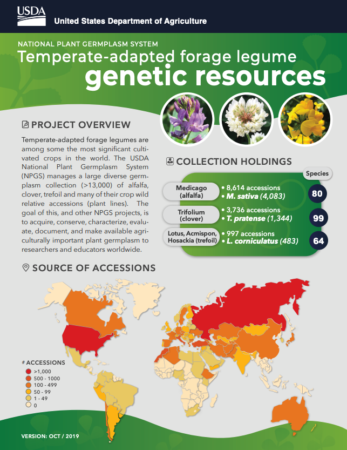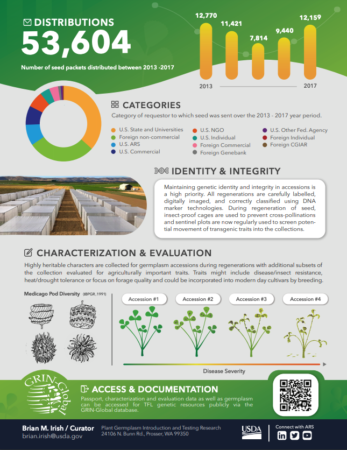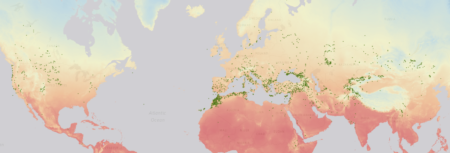Our friends Andreas Ebert and Jan Engels are editing a Special Issue of the journal Plants on “Plant Biodiversity and Genetic Resources.”
Dear Colleagues,
The foundation of the world food supply is based on thousands of years of crop selection, and improvement carried out on wild and semi-domesticated species, crop wild relatives and landraces, giving rise to present-day cultivated crop varieties. The ‘wild’ genes of crop wild relatives and landraces strongly influence agronomic characteristics such as phenology, growing seasons, sensitivity to inputs (i.e., fertilizer and water), resistance to diseases and insect pests and tolerance to heat, drought, and salinity. The availability of such genetic diversity is critical for plant breeding, especially with climate change. Moreover, the genetic diversity within and between species gives rise to a multitude of characteristics that enable plants, animals, and microbes to fulfill different roles in the environment and to adapt to changing conditions, as this diversity will ensure the continued functioning of ecosystems and the provisioning of ecosystem services.
Current over-reliance on a handful of major staple crops has inherent agronomic, ecological, nutritional, and economic risks and is unsustainable in the long run. The wider use of underutilized minor crops provides more options to build temporal and spatial heterogeneity into uniform cropping systems helping to maintain and enhance efficiency and resilience of agroecosystems and to enhance dietary diversity and combat malnutrition.
Production systems and the underlying genetic resources including crop wild relatives that are found in cultivated and protected land, and especially in natural ecosystems such as forests (ranging from tropical to temperate), are severely threatened due to drastic land-use changes, over-exploitation of resources, and man-made and natural disasters. Climate change is already affecting the distribution of plants and associated species, their population sizes, and life cycles. Efficient adaptation strategies for a changing climate require, among other measures, the effective and rational conservation and sustainable utilization of the remaining (in particular agricultural) biodiversity, both in situ as well as in genebanks and access to genetic resources of crops and their wild relatives by plant breeders.
To develop and grow ‘climate-smart’ crop varieties for sustainable production systems, farmers and plant breeders worldwide are in dire need of access to a wide range of traits and genes, often found in plant genetic resources located far away from major production areas. This raises a multitude of policy issues and concerns regarding access and benefit-sharing, ownership, intellectual property rights, and patents imposed on PGRFA and breeding lines, as well as implications of transgenic crops for biodiversity and sustainable agriculture.
Therefore, in this Special Issue on plant biodiversity and genetic resources, we invite articles (original research papers, reviews, perspectives, opinions, and modeling approaches) that address the above-mentioned issues and are guided by the keywords provided for this topic.
Dr. Andreas W. Ebert
Dr. Johannes M. M. Engels
Guest Editors


